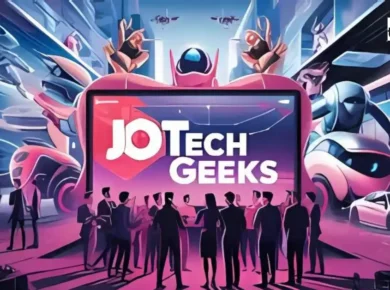In the rapidly advancing landscape of educational technology, BlackboardUCT has emerged as one of the most essential tools for institutions globally. As a versatile learning management system (LMS), BlackboardUCT bridges the gap between educators and students, providing a seamless digital environment for communication, coursework management, and grading. Whether you’re an educator looking to streamline your teaching approach or a student aiming to manage your studies more effectively, BlackboardUCT has a lot to offer. In this guide, we will delve deeply into every aspect of BlackboardUCT, exploring its features, advantages, and performance.
| Aspect | Details |
|---|---|
| Platform Name | BlackboardUCT |
| Purpose | Learning Management System (LMS) for managing courses, communication, and assessments |
| Key Features | Course management, communication tools, grade center, mobile compatibility, assessment tools |
| Course Management | Allows instructors to create, modify, and manage courses, upload course materials |
| Communication Tools | Discussion boards, messaging systems, video conferencing for real-time or asynchronous communication |
| Grade Center | Automatic grading for quizzes/tests, manual grading for essays/assignments |
| Mobile Compatibility | Mobile app allows access to the platform from smartphones and tablets |
| Assessment Tools | Custom quizzes, assignments, exams, timed and randomized assessments |
| Performance | High reliability, seamless integration with other tools, customizable interface |
| Integration | Works with Google Drive, Microsoft Office, third-party apps |
| Accessibility | Screen reader compatibility, keyboard navigation, adjustable text sizes for students with disabilities |
| Security and Data Privacy | Strong security protocols, data encryption, compliance with global data protection regulations |
| Pricing | Subscription-based model, pricing varies by institution size and feature requirements |
| Advantages | Enhanced learning experience, time-efficient, scalable, global reach |
| Challenges | Learning curve for advanced features, technical issues with third-party apps, requires ongoing training |
| Potential Future Growth | AI and machine learning integration, expanded collaboration features, VR/AR learning, blockchain credentialing |
| Comparison with Other LMS | BlackboardUCT offers more features and enterprise-level tools compared to Moodle, Canvas, and Google Classroom |
| Future Trends | AI personalization, VR/AR integration, global partnerships, blockchain for credentialing |
| User Feedback | Continuous updates based on user feedback, enhanced user interface, multi-language support |
What is BlackboardUCT?
BlackboardUCT is a learning management system (LMS) designed to cater to universities, colleges, and educational institutions. It integrates several tools that enable educators to conduct online courses, share resources, communicate with students, and manage assessments efficiently. UCT, or the University of Cape Town, is one of the institutions that use Blackboard’s platform to offer a hybrid learning experience, blending traditional and digital education methodologies.
Key Features of BlackboardUCT
The BlackboardUCT system is packed with features tailored to simplify the educational process for both educators and learners. Some of its standout functionalities include:
1. Course Management
At the heart of BlackboardUCT lies a robust course management system. Educators can create, modify, and manage multiple courses simultaneously. They can upload course materials, such as syllabi, readings, and multimedia content, directly to the platform, ensuring that students have access to everything they need in one place.
2. Communication Tools
One of the most essential aspects of BlackboardUCT is its suite of communication tools. Instructors can use discussion boards, messaging systems, and video conferencing to interact with students in real time or asynchronously. These features ensure that distance and hybrid learners can stay engaged with their course material and maintain an ongoing dialogue with their instructors.
3. Grade Center
The Grade Center on BlackboardUCT simplifies the grading process for educators. This tool allows for automatic grading of quizzes and tests while also enabling custom input for essays and assignments. Students can easily track their academic performance and get timely feedback on their work.
4. Mobile Compatibility
In today’s mobile-first world, it’s essential for platforms to be compatible across various devices. BlackboardUCT offers a mobile app that allows students and instructors to access the platform from their smartphones and tablets, ensuring that they can stay connected no matter where they are.
5. Assessment and Quizzing Tools
The platform’s assessment tools allow educators to create custom quizzes, assignments, and exams. These assessments can be timed, randomized, and graded automatically, making it easier for educators to test their students’ understanding and for students to take assessments at their convenience.
Performance and Usability of BlackboardUCT
BlackboardUCT is renowned for its user-friendly interface and reliability. Institutions that have adopted BlackboardUCT report a reduction in administrative workload and an increase in student engagement. The system’s performance is consistently rated high due to its seamless integration with other academic tools, including plagiarism detection software, and its ability to handle large numbers of concurrent users without lag.
1. Seamless Integration
The platform integrates effortlessly with other tools like Google Drive, Microsoft Office, and third-party apps. This functionality enables educators and students to share documents and collaborate on projects without needing to leave the BlackboardUCT environment.
2. Customizability
BlackboardUCT provides customizable dashboards for both instructors and students. This means that users can tailor their experience according to their preferences, such as organizing their course lists or prioritizing notifications.
3. Accessibility
In line with global educational standards, BlackboardUCT is designed to be accessible to students with disabilities. Features like screen reader compatibility, keyboard navigation, and adjustable text sizes ensure that all students, regardless of physical challenges, can make full use of the platform.
4. Security and Data Privacy
Educational institutions using BlackboardUCT benefit from top-tier security protocols and data privacy measures. All user data is encrypted, and access to personal information is strictly limited to authorized personnel, ensuring compliance with global data protection laws such as GDPR.
Pricing of BlackboardUCT
While pricing varies depending on the scale of implementation, BlackboardUCT typically operates on a subscription-based model for educational institutions. The cost depends on factors such as the number of users, the specific features required, and the institution’s size. Although the pricing is not publicly available, it is known to be a premium solution due to its wide range of features and high performance.
Many institutions view BlackboardUCT as a worthwhile investment given the enhanced learning experience it offers. Moreover, the platform’s flexibility allows institutions to expand its use without significant increases in cost, providing long-term scalability.
Advantages of Using BlackboardUCT
The use of BlackboardUCT brings a multitude of advantages for both educators and students, which include:
1. Enhanced Learning Experience
BlackboardUCT offers a variety of interactive tools, from video conferencing to multimedia presentations, allowing educators to deliver content in engaging ways. For students, having access to a digital repository of materials, assignments, and lectures helps in fostering a more self-paced learning environment.
2. Time Efficiency
With automated grading, easy communication, and centralized resources, educators save valuable time that can be reinvested into improving their teaching strategies. Students also benefit from the streamlined experience, which reduces confusion and administrative hurdles.
3. Scalability
BlackboardUCT can be scaled up or down depending on the institution’s size and specific needs. Whether a small college or a large university, BlackboardUCT’s infrastructure supports thousands of users without any drop in performance.
4. Global Reach
Because BlackboardUCT is accessible anywhere with an internet connection, it helps institutions cater to both local and international students. This global reach enhances diversity in classrooms and prepares students for the international workforce.
Challenges of BlackboardUCT
While BlackboardUCT is a robust platform, it’s not without its challenges. Some users may find the learning curve steep, especially when navigating the more advanced features. Additionally, technical issues, although rare, can occur, particularly when integrating third-party applications. Institutions also need to invest in ongoing staff training to ensure that both educators and administrators can maximize the platform’s potential.
Potential for Future Growth of BlackboardUCT
As educational institutions continue to adapt to the ever-evolving digital landscape, platforms like BlackboardUCT will likely see further growth and innovation. Several trends point to how BlackboardUCT might evolve in the coming years:
1. Integration with AI and Machine Learning
As artificial intelligence (AI) and machine learning (ML) continue to reshape industries worldwide, educational platforms are expected to benefit significantly. BlackboardUCT could potentially integrate AI-driven tools to offer personalized learning paths for students, adaptive assessments, and predictive analytics to forecast student performance. These advancements would help instructors identify students who may be struggling and offer tailored support to improve their academic outcomes.
2. Expanded Collaboration Features
The future of online education will likely focus more on collaborative learning. By incorporating real-time document sharing, group project management tools, and enhanced video conferencing capabilities, BlackboardUCT can further foster teamwork among students. The demand for group collaboration, especially in hybrid and fully remote learning environments, is anticipated to rise, and BlackboardUCT can become a hub for these interactions.
3. Virtual and Augmented Reality Learning
The adoption of virtual reality (VR) and augmented reality (AR) in education is expected to grow, providing immersive learning experiences. Imagine medical students practicing surgeries in a virtual environment or history students walking through virtual recreations of ancient civilizations. BlackboardUCT’s potential future integration with these technologies could revolutionize traditional teaching methods, making learning more interactive and engaging.
4. Global Partnerships and Expanded Access
BlackboardUCT’s global reach can be further enhanced by forging partnerships with international universities and education organizations. By expanding its user base, BlackboardUCT can enable more cross-institutional collaborations, helping students from different parts of the world collaborate on projects, share ideas, and learn from diverse perspectives. Additionally, institutions in developing countries could benefit from affordable access to advanced educational tools, leveling the playing field for students globally.
5. Blockchain for Credentialing
As education evolves in the digital age, blockchain technology could be utilized by BlackboardUCT to provide verifiable digital credentials. With blockchain, students could store academic achievements, certifications, and diplomas on a secure, decentralized ledger, making it easier for employers and educational institutions to verify qualifications.
User Feedback and Continuous Improvement
A key component of any learning management system’s success lies in the feedback loop between the institution, educators, students, and the platform providers. BlackboardUCT is no exception, with regular updates and improvements based on user suggestions. Here are some ways in which the platform continues to evolve:
1. User-Centric Design Updates
As part of BlackboardUCT’s ongoing development, the platform frequently updates its user interface based on student and educator feedback. This ensures that the platform remains intuitive, modern, and easy to navigate, catering to the ever-changing needs of its users.
2. Expanding Training Resources
To help new users master the platform, BlackboardUCT has expanded its range of tutorials, help guides, and webinars. These resources allow educators and administrators to stay up to date with the latest features and best practices, ensuring that institutions get the most out of their investment in the platform.
3. Multi-Language Support
In response to feedback from international institutions, BlackboardUCT has enhanced its multi-language support, making the platform accessible to students and educators in non-English speaking regions. This move ensures that more institutions globally can benefit from the platform without language barriers.
Comparing BlackboardUCT with Other Learning Management Systems
While BlackboardUCT has established itself as a leading player in the LMS market, it is essential to compare it with other popular platforms to better understand its strengths and weaknesses.
1. BlackboardUCT vs. Moodle
Moodle, an open-source LMS, is often compared to BlackboardUCT. While Moodle is free to use, it requires extensive customization and technical expertise to set up. BlackboardUCT, on the other hand, offers a ready-made solution with a more polished user interface, professional support, and a wide range of built-in features. Institutions that want full control over their platform’s appearance and functionality may prefer Moodle, while those seeking ease of use and comprehensive support tend to opt for BlackboardUCT.
2. BlackboardUCT vs. Canvas
Canvas, another prominent LMS, is known for its modern interface and ease of use. Canvas offers intuitive drag-and-drop features and is highly customizable. However, BlackboardUCT’s robust feature set and enterprise-level capabilities make it a better choice for larger institutions with complex needs, such as advanced data analytics, grade management, and mobile accessibility.
3. BlackboardUCT vs. Google Classroom
While Google Classroom is primarily designed for K-12 education, its simplicity and integration with Google Workspace tools make it appealing for small institutions or those on a tight budget. However, for higher education institutions and universities, BlackboardUCT offers a more comprehensive suite of features, including more sophisticated grading tools, communication platforms, and course management systems, making it a more suitable option for complex educational environments.
Conclusion
BlackboardUCT stands as a powerful and versatile tool in the realm of educational technology. By offering a range of features—from comprehensive course management to robust communication tools—BlackboardUCT supports the evolving needs of both educators and students in a rapidly digitalizing world. Its seamless integration, user-friendly interface, and mobile compatibility make it a preferred choice for many institutions globally.










